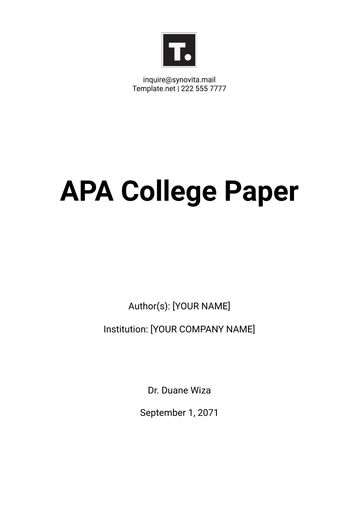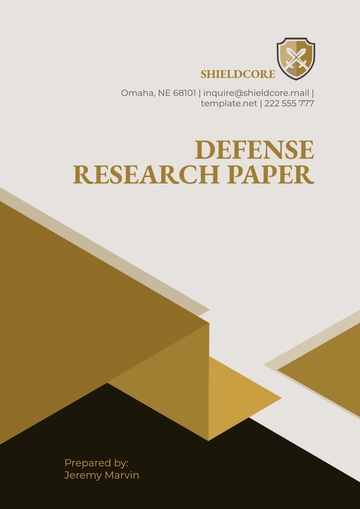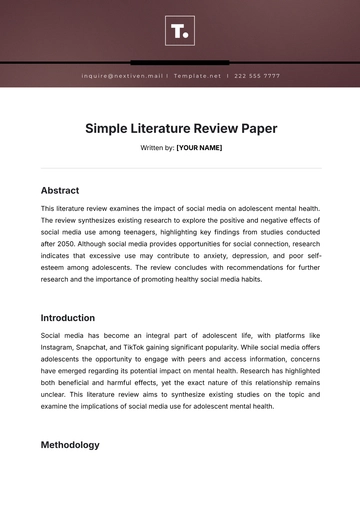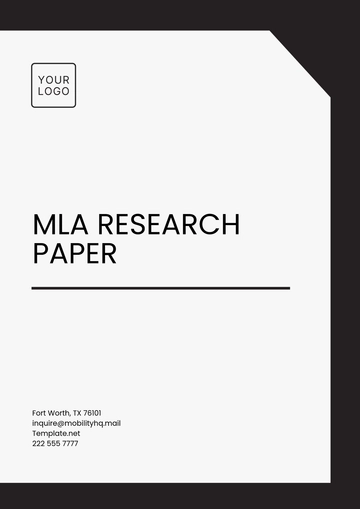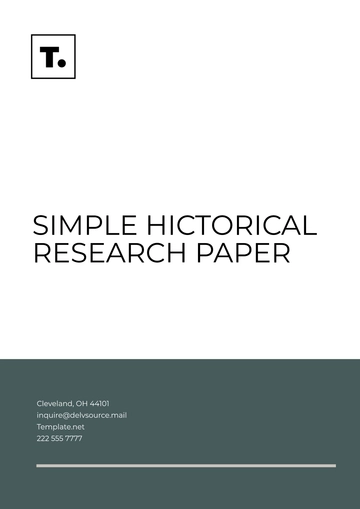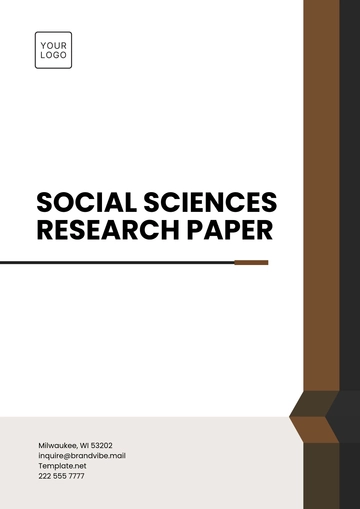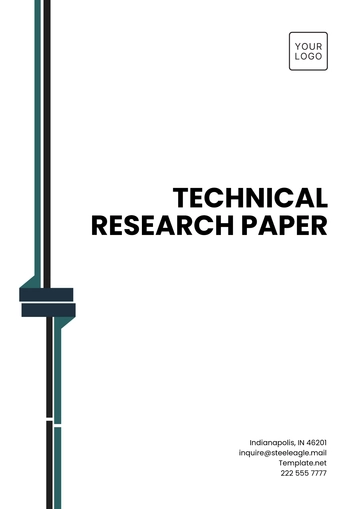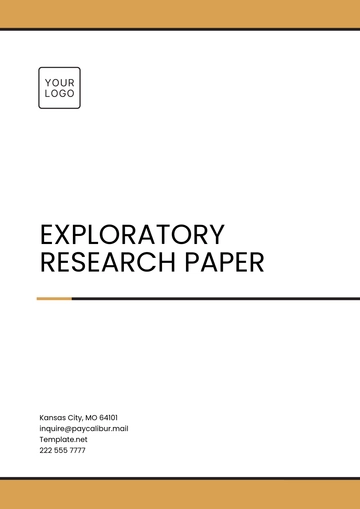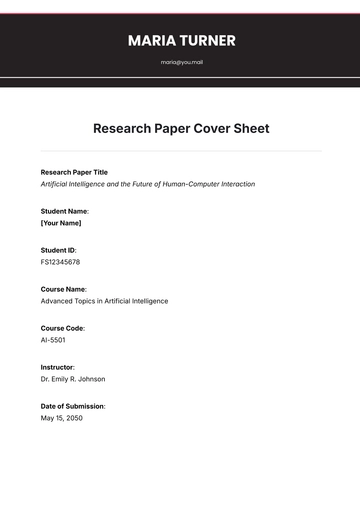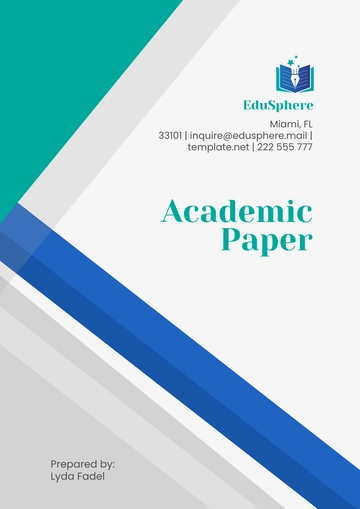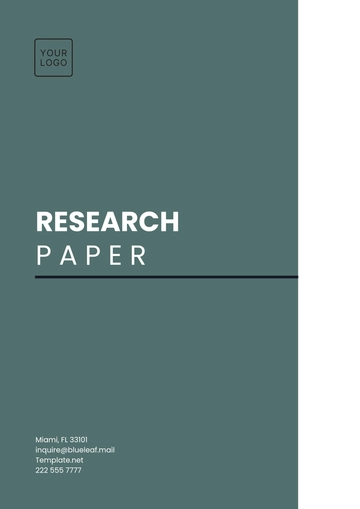Free Academic White Paper

Unlocking Insights: A Comprehensive Analysis of [Your Academic Topic]
Author: [YOUR NAME]
Department: [YOUR DEPARTMENT]
Institution or Affiliation: [YOUR COMPANY NAME]
Date: [DATE]
I. Introduction
The introduction section of the white paper offers a comprehensive overview of the research topic under consideration, delves into its significance within the relevant field, and outlines the primary objectives that the document aims to achieve.

A. Background
Briefly introduce the background information related to the topic.
Highlight any previous research or studies conducted in the field.
Discuss the importance of addressing the topic.
B. Research Question
Clearly state the research question or problem statement that the white paper aims to address.
Explain why this question is important and relevant to the academic community.
II. Literature Review
The literature review section critically evaluates existing research, theories, and methodologies relevant to the research question.
A. Key Concepts
Define key terms and concepts relevant to the research topic.
Provide a comprehensive overview of the theoretical framework.
B. Previous Studies
Summarize previous studies and findings related to the research question.
Identify gaps or limitations in the existing literature.
C. Theoretical Framework
Discuss the theoretical framework guiding the research.
Explain how different theories or models inform the research approach.
III. Methodology
The methodology section outlines the research methods, data collection techniques, and analytical approaches used in the study.
A. Research Design
Describe the overall research design (e.g., experimental, observational, qualitative, quantitative).
Justify the chosen research design based on the research question and objectives.
B. Data Collection
Explain the methods used to collect data (e.g., surveys, interviews, experiments).
Discuss the sampling strategy and sample size considerations.
C. Data Analysis
Detail the data analysis techniques employed (e.g., statistical analysis, thematic analysis).
Discuss how the data were interpreted to address the research question.
IV. Findings
The findings section presents the results of the research, including data analysis, key findings, and insights.
A. Quantitative Findings
Present quantitative data (e.g., survey results, statistical findings) clearly and concisely.
Use tables, charts, or graphs to illustrate key findings.
B. Qualitative Findings
Summarize qualitative data (e.g., interview transcripts, and observational notes) and identify recurring themes or patterns.
Provide quotes or examples to support qualitative findings.
V. Discussion
The discussion section interprets the findings about the research question, theoretical framework, and existing literature.
A. Interpretation
Interpret the findings and explain their implications for the research question.
Discuss any unexpected results or limitations of the study.
B. Comparison with Literature
Compare the study findings with existing literature and theories.
Identify areas of agreement, disagreement, or extension of previous research.
VI. Conclusion
The conclusion section summarizes the main findings of the study and offers implications for future research or practice.

A. Summary of Findings
Recap the key findings and contributions of the research.
Emphasize the significance of the findings in addressing the research question.
B. Future Directions
Suggest areas for future research or potential extensions of the study.
Discuss how the research contributes to advancing knowledge in the field.
VII. References
The references section of the white paper provides a comprehensive listing of all the sources that have been cited throughout the document, ensuring each source is documented according to the appropriate citation style, such as APA or MLA, as required.
VIII. Appendix
The appendix section includes supplementary materials such as raw data, survey instruments, or additional analyses that support the findings presented in the white paper.
- 100% Customizable, free editor
- Access 1 Million+ Templates, photo’s & graphics
- Download or share as a template
- Click and replace photos, graphics, text, backgrounds
- Resize, crop, AI write & more
- Access advanced editor
Harness the essence of academia with Template.net's Academic White Paper Template. Designed for scholars and researchers, it's your conduit to scholarly excellence. Completely editable and customizable, this template offers unparalleled flexibility in crafting your academic discourse. With our Ai Editor Tool, refine your content effortlessly, ensuring your ideas shine brightly. Unleash your academic prowess with a template that adapts to your intellectual journey.


